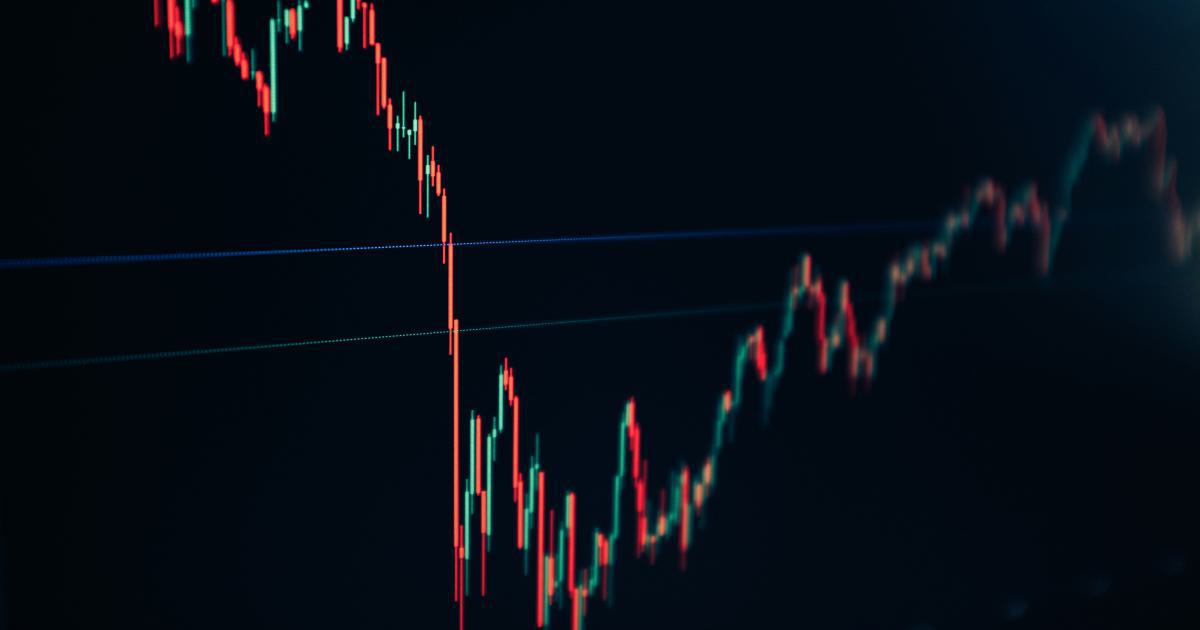Reduce Emotional Trading Losses in Just 14 Days

Opening Hook
In the high-stakes world of trading, one moment can define your success or failure. Imagine waking up to find that your portfolio has taken a hit overnight, and you blame nothing else but your own emotions. The term emotional trading losses is not just jargon; it encapsulates the struggle of traders caught in a vicious cycle of fear, greed, and regret. In this article, we embark on a 14-day journey that promises to equip you with the tools and mindset required to cut through the noise and regain control over your trading decisions. Picture yourself emerging from the chaos, knowing that every trade is guided by strategy rather than impulse.
Have you ever felt that heart-sinking moment when a decision you made in haste spirals into significant loss? Let’s dive into a story that blends raw, personal experiences with expert insights, all designed to help you reduce emotional trading losses once and for all.

The Journey
Our journey begins with a candid exploration of the trading world—a territory as unpredictable as the weather. Today, we're not just discussing charts, indicators, or economic forecasts; instead, we are delving into the human side of trading.
Understanding Emotional Trading Losses
At the core of many trading mishaps is the inability to manage emotions effectively. Emotions, when left unchecked, have the power to sabotage even the most well-thought-out strategies. During our 14-day transformative process, we place emphasis on identifying the triggers that lead to impulsive decisions.
The key lies in acknowledging that every trader faces moments of doubt, anxiety, and overconfidence. For instance, during a sudden market dip, the instinctive reaction might be to exit a trade prematurely, leading to a missed opportunity or amplified losses. This emotional response can be traced back to a deep-seated fear of uncertainty. Yet, by recognizing these patterns, you can start to differentiate between instinct and strategy.
"Trading without a strategy is like sailing without a compass," noted Linda, a veteran trading mentor who has seen countless traders fall prey to their own instincts.
In psychological studies, it has been estimated that nearly 70% of trading failures can be directly attributed to emotional decision-making. This statistic serves as a wake-up call for anyone serious about success in this field. As we proceed through this journey, remember that insights and solutions are within your grasp.
What Are Emotional Trading Losses?
Emotional trading losses refer to financial setbacks that occur as a result of unregulated, emotionally-driven decisions. Far from being a minor issue, these losses often compound over time, creating a cycle where each mistake fuels further anxiety and impulsiveness. Understanding and mitigating these losses involves:
- Recognizing emotional triggers
- Implementing strategic safeguards
- Cultivating discipline and mindfulness
Each of these steps is essential, as even the smallest lapse in self-control can lead to significant consequences.
A Day in the Life: The Faces Behind the Figures
Let’s meet Sam, a mid-career trader whose journey mirrors many who grapple with emotional challenges. The daily routine for Sam begins at dawn, with an intricate balance of market analysis coupled with a personal ritual to center his mind. He spends time with his mentor, Linda, who has been trading for decades. Their conversations often take unexpected turns as they debate market trends, share personal anecdotes, and discuss the inevitable setbacks.
One crisp morning, Sam recounts a recent incident:
"I entered a trade believing the market would soon rebound, only to watch my position crumble within minutes. I panicked and made several hasty decisions that I now regret," he admitted, his voice laden with both frustration and determination.
Linda replied with wisdom born of years of experience:
"Sam, every loss is a lesson if you’re willing to learn. Remember, the markets aren’t personal—they’re simply a reflection of human behavior, including our own."
This dialogue encapsulates the essence of our journey: understand your reactions, learn from each setback, and approach trading with a renewed sense of clarity.

The Turning Point: Recognizing and Redirecting Emotions
Around day five of our journey, a pivotal moment arrives. For many traders like Sam, the turning point is not in discovering a hidden technical indicator but in realizing the omnipresence of emotions in decision-making. The realization that emotional trading losses can be minimized through methodical self-assessment triggers a profound change.
Linda introduces a simple yet powerful exercise: pause and jot down your feelings before executing any trade. Over the span of two weeks, this exercise becomes a ritual. Sam begins to note patterns—moments of unchecked optimism that lead to overextending his positions, and bouts of hesitation that cause him to miss opportunities. Gradually, these written reflections unveil the recurring triggers behind his impulsive trades.
"Understanding your emotions is the first step towards mastering them," Linda observes during one of their feedback sessions.
The revelation is clear: by bringing conscious awareness to one’s emotional state, the risk of succumbing to impulsive decisions decreases dramatically. This exercise does more than mitigate risk; it empowers traders to confront their vulnerabilities head-on.
Data and Expert Opinion
Recent studies underscore the importance of emotional intelligence in trading. Research indicates that traders who maintain a reflective journal and engage in daily mindfulness practices experience up to a 40% improvement in decision quality. Experts argue that retracing one’s emotional journey facilitates improved risk management and enhances overall trading performance.
Some practical methods include:
- Daily reflection: Taking five minutes after each trading session to analyze emotions.
- Mindfulness meditation: A short session before trading to center the mind.
- Setting pre-determined limits: Both for loss and gain, to avoid reactionary decisions.
These actionable strategies create a blueprint for reducing emotional trading losses over a specified period, ideally within just 14 days of dedicated practice.
Character and Dialogue: The Mentor-Trainee Dynamic
As the journey progresses, the dynamic between mentor and trainee becomes a pivotal storyline. Let’s delve deeper into the interaction between Sam and Linda, whose conversations are imbued with both affection and a firm resolve to beat the emotional pitfalls of trading.
Sam and Linda: A Mentor-Trainee Chronicle
Sam recalls a particularly stormy day when he was wrestling with the fear of losing everything. The volatility of the market mirrored the turbulence inside his mind. In a moment of vulnerability, he confided in Linda:
"I look at the figures, and they seem to attack me, as if the market itself is rejecting my judgment," he lamented.
Linda responded with calm assurance:
"The market is not against you, Sam. It is merely a canvas painted with the brushstrokes of human emotion. What you need is a strategy rooted in logic and discipline, not fear."
This conversation highlights a critical theme: the interplay between emotion and rationality. It is precisely this dialogue that brings to life the concept of combating emotional trading losses. For every setback, there is a mentor or a method that helps steer you back on course.
Key Techniques Employed in the Journey
Both Sam and Linda agree on several techniques designed to combat emotional pitfalls:
Mindful Monitoring: Taking regular breaks during trading sessions to assess one's emotional state.
Pre-Trade Rituals: Engaging in a routine that includes deep-breathing exercises, a quick review of the market conditions, and setting personal emotional checkpoints.
Post-Trade Journaling: Writing down immediate emotions right after each trade to develop self-awareness over time.
Seeking Second Opinions: Discussing strategies with peers or mentors to gain perspective before reacting to market fluctuations.
These techniques have not only helped Sam reduce his emotional trading losses radically but have also provided him with a resilient framework to approach future challenges.

Plot Twists: The Unconventional Realizations
In every journey, there are moments when our assumptions are challenged by unexpected truths. For Sam, a turning point came when he discovered that some of the conventional advice on risk management missed addressing the root cause: the emotional self.
The Invisible Battle
Unlike physical battles where opponents are tangible, the struggle within is invisible yet immensely impactful. Early in his trading career, Sam believed that more advanced software or faster internet connections would provide him with an edge. However, as he began to monitor his trades, it became evident that his real enemy was not the market mechanics but his own predisposition to fear and greed.
A surprising insight emerged from this self-study: the very traits that sometimes enabled him to find unique opportunities also instigated his downfall. For example, Sam’s natural enthusiasm, which often drove him to take bold risks, turned into overconfidence during market surges. Conversely, his cautious nature, intended to shield him from risks, often paralyzed him in critical moments.
"The irony is that your strength can also be your weakness," Linda remarked during one of their late-night review sessions.
This realization pivoted Sam’s approach. He began to see his emotions as part of the trading equation rather than an external disturbance. By accepting that emotions are inevitable and learning to work within that framework, he recalibrated his strategies. The shift was more nuanced than simply following a set of rules; it involved an emotional realignment that allowed him to harness his instincts constructively.
Counterintuitive Findings
One of the most startling discoveries was that taking breaks—even after a minor loss—could lead to more decisive and reflective trading. Industry experts have long emphasized the importance of steady discipline, yet Sam’s experience proved that a brief respite could clear the mind and reduce the tendency towards reactive trades.
Consider the following insights derived from his journaling:
- Observation 1: Short, mindful breaks increased overall concentration.
- Observation 2: Fear of missing out (FOMO) was significantly reduced when he allowed himself time to reflect.
- Observation 3: Emotional spikes often preceded market downturns, serving as early warning signals.
This empirical evidence, backed by expert opinion, further solidified the notion that managing emotional trading losses is as much about timing and emotion management as it is about technical skill.
Climax: The Moment of Clarity
As day 14 dawned, the culmination of our journey, a transformative insight emerged. Sam, having endured numerous ups and downs, finally reached a state of clarity. The practice of journaling, mindfulness, and disciplined trading had started to weave together a coherent strategy. His trades began to reflect not just technical acumen but also a balanced temperament.
"I used to feel like every trade was a battle with my inner demons," Sam confessed with a newfound calm. "Now, I see each trade as an opportunity to learn and refine my approach. My emotions are still there, but I no longer let them dictate my actions."
This sentiment encapsulated the climax of his journey: transformation through self-awareness and disciplined practice. His portfolio, once marred by erratic decisions and impulsive moves, now exhibited a steady upward trend. But the most valuable transformation was internal—a shift from reactive impulse to measured strategy.
During this process, Sam discovered three core principles that reshaped his trading mindset:
Objectivity Over Emotion: A clear distinction between market trends and emotional reactions.
Patience as a Virtue: Allowing time for decisions rather than succumbing to knee-jerk reactions.
Continuous Learning: Recognizing that every trade, whether profitable or not, offers a lesson in discipline.
These principles, when internalized, can change the very fabric of a trader’s approach, converting pitfalls into stepping stones.

Resolution
The journey to reduce emotional trading losses in just 14 days is far from a magic bullet—it is a disciplined commitment to reshaping your emotional landscape. As we conclude this narrative, several practical takeaways emerge that can be applied by traders of all levels.
Key Takeaways for a Sustainable Trading Future
Build a Reflective Routine: Start and end your trading day with a few minutes dedicated to mindfulness. This is not just about calming your mind but about creating a space where you can observe your emotions objectively.
Embrace Journaling: Document every emotional surge connected with a trade. Over time, this record will help you identify patterns and triggers that you can then learn to manage.
Set Clear Boundaries: Establish strict entry and exit points for trades. This not only minimizes losses but also sets a disciplined structure that leaves little room for emotionally driven decisions.
Learn from Every Loss: Each setback is an instruction manual for your trading psyche. Don’t see losses as failures, but as a crucial part of your learning curve.
Engage with a Mentor or Support Group: Collaborative learning, through mentors like Linda or even peer groups, can offer the perspective needed to counterbalance one’s emotional impulses.
"Self-discipline is not just a skill for trading; it’s an essential life skill," Linda wisely advises.
Implementing Your 14-Day Plan
For those ready to undertake this transformative journey, the following 14-day plan can serve as a guide:
- Days 1-3: Start by setting up your trading journal. Dedicate time to observe and record every emotion before and after each trade.
- Days 4-7: Introduce a daily meditation routine. Even a five-minute practice can help reset your mental state.
- Days 8-10: Focus on setting clear boundaries. Predefine your risk exposure and stick to your rules irrespective of market noise.
- Days 11-13: Review your documented trades and emotions. Identify recurring patterns and brainstorm corrective strategies.
- Day 14: Consolidate your learning. Reflect on the progress you’ve made and restructure your trading plan to integrate these new habits.
Don’t be discouraged by early failures. As you continue to practice, the difference between impulse and strategy will become increasingly evident. The process is iterative—a constant evolution of your approach.
Future Implications and Call to Action
The insights shared in this journey extend beyond the realm of trading. They offer a framework for any high-pressure decision-making environment where emotions can cloud judgment. Whether you are managing investments, a business, or even personal challenges, the principles of mindfulness, journaling, and structured decision-making are universally applicable.
As you move forward, consider the following:
- Regularly assess your emotional landscape.
- Adjust your strategies as you evolve.
- Share your insights with a community to foster collective growth.
"The path to mastery is paved with both victories and losses. The key is learning to navigate through both with unwavering focus," concludes Linda.
In closing, the journey to reducing emotional trading losses is as much about introspection as it is about trading strategies. Embrace this adventure with an open mind and a resilient heart. Remember, every loss is an opportunity to grow, and every day is a step toward more informed, disciplined trading.
Whether you're a seasoned trader or just stepping into the arena, integrating these practices can transform your approach, turning volatility into a manageable risk and emotional turbulence into a catalyst for learning. The journey lasts just 14 days to see initial improvements, but its lessons can last a lifetime.
Your future in trading isn’t dictated by the whims of market forces alone—it is controlled by your ability to master your own inner world. Today, you have the chance to rewrite your trading story. Will you take that first decisive step?

Unlock Your Trading Potential with Edgewonk
Struggling to consistently achieve profitable trades? Edgewonk's cutting-edge analytics empower you to analyze your performance and refine your strategies.
Our advanced trading journal software provides detailed insights, psychological analysis, and personalized recommendations tailored to your unique trading style.
Quentin Merriweather
15 posts written




